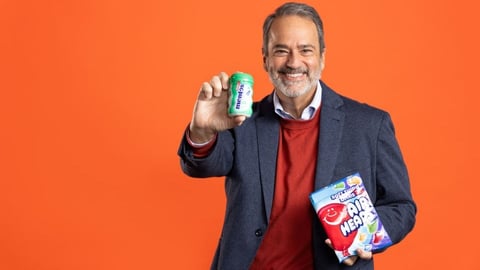How CPGs Can Unlock the Power of Personalization Through Data Clean Rooms
It's important to consider how the past is influencing the now and the next, especially when it comes to placing bets on business decisions.
In a presentation at CGT's Analytics Unite event last week, Imteaz Ahamed, Reckitt’s director of performance marketing and nutrition, shared how CRM and data infrastructure investment decisions made a decade ago can have a big impact on the here and now.
“Sometimes you need foresight, and you need business leaders to actually have the ability to make those bets in the future, even when they don't have all of the data in front of them to make those decisions,” he noted.
This level of tech-enabled foresight is especially important in consumer goods, where sudden surges in demand and supply chain disruption can transform operations virtually overnight.
No one understands this better than Ahamed, who joined Reckitt’s nutrition division in 2020. This was a particularly tumultuous time, when a key baby formula manufacturing competitor had a recall, and they saw product sales increase dramatically.
- Also read: Kris Licht Is Taking Over as CEO of Reckitt
To ensure a more robust marketing strategy that can quickly respond to such changes, CPGs have been turning to data clean rooms — controlled spaces where ad publishers share aggregated data rather than customer-level data with advertisers while still exerting strict controls.
To illustrate how the clean rooms work, Ahamed drew a humorous comparison to middle school dances.
“In the gym, you have the boys on one side and the girls on the other, heavily chaperoned for a temporary interaction,” he explained. “Once the dance ends, everyone returns to the wall. It's not about who owns the gym; what matters is the music, the transaction, and the value exchange occurring at that moment.”
In the same way, data from disparate sources meet temporarily to interact and learnings are gleaned from how these interactions play out.
Identifying Opportunities
The baby formula category faces more than just market fluctuations. The other underlying issue is that its consumers age out rapidly — usually in under a year.
“There's about 3.6 million births in the U.S., which means 10,000 babies being born every single day. But there's also 10,000 babies leaving the category every day in the U.S. because there's next to no population growth here,” Ahamed explained.
So how can you grow in a category with such high consumer turnover?
Drawing on a well-established CRM system and access to first-party data can help CPGs identify opportunities to extend their sequential messaging approach and align product offerings with parents' specific life stages and needs.
A first-party data foundation can be built, in part, by heavy sampling distribution based on ratings on a particular propensity to buy products. Those with high propensity may receive samples, while those in low propensity may receive coupons or promotional emails.
By marrying demographic data with consumer behavior insights, CPGs can successfully craft hyper-targeted audiences and delivered tailored campaigns, optimizing budget allocation and creative content.
Interested in learning more about Analytics Unite? Ashish Bharara, supply chain director at Amazon, kicked off the event. Read his story here and stay tuned for more coverage.





